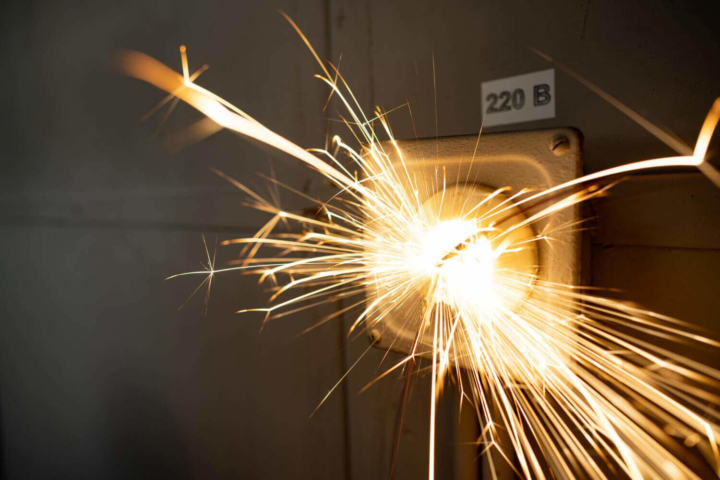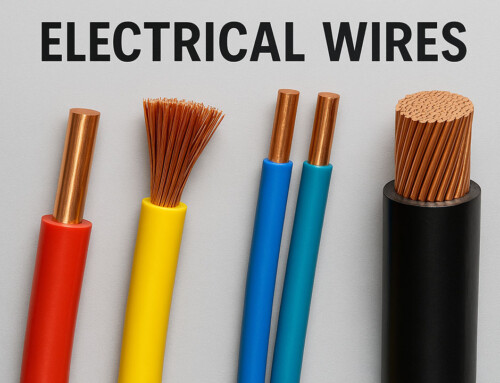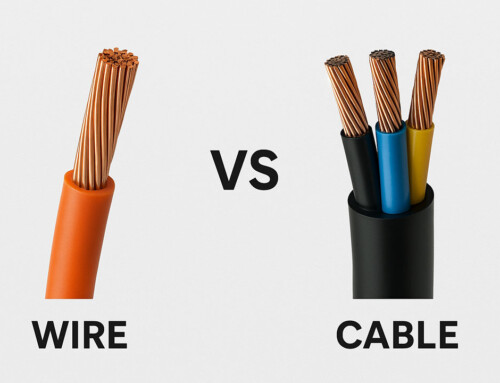Table of Contents
What is an Arc Flash?
An Arc Flash is created by the light and healing of an arc fault. It is also known as electric flash. It’s a movement of electric discharge.
This light and heat are created due to low impedance connections in the electrical system, it allows the movement of unwanted electric discharge through the air from one voltage phase to another or the ground.
This leads to a rapid rise in temperature and pressure in the air between electrical conductors, causing an explosion known as an arc blast.
What is an Arc Blast?
Arc blast is the result of heat from the arc flash. This heat also causes electric fires. This phenomenon can lead to pressure waves and flying shrapnel that seriously damages life and property.
These explosions typically occur without any warning, wreck electrical equipment and lead to severe injury or death of personnel present within the boundary of the electric arc.
Therefore you must take proper steps to ensure arc flash safety in your home, office, factory, or other establishments.
Arc Flash vs. Arc Blast
There’s a lot of confusion surrounding the electric arc flash & blast. Both arc flash and arc blast are the by-products of electrical fault and explosion. So how do you differentiate between them! The distinction lies in their trigger.
The arc flash is the light and heat generated from an electrical explosion. The arc blast results from a sudden pressure wave released from the flashing arc. In a way, electric arc and arc blast are a part of a chain reaction, happening one after another.
What Are Some Examples of Arc Flash?
An arc flashing is possible in the most intense voltage areas and also in your home with a regular power supply. However, the intensity of arc flash hazard increases with the voltage you get in electrical supplies.
Here are a few arc flash examples. When high-tension power lines get too close, an energy discharge is possible between the conductors. Blue or red light may come out of this phenomenon. It may go uncontrolled, hissing and blowing if there’s a storm.
The regular light bulb in your home can also fall prey to burnout and cause an arc flash. But it’s generally not as hazardous as the electric arc in a high-voltage electric supply set-up.
How is Arc Flash Measured?
Arc flash is measured in calories per square centimetre (cal/cm²). It is the amount of heat and electrical energy the explosion produces. This measurement is also termed incident energy.
Various other forms of energy are released during an arc flashing, such as pressure and sound. But the significant contribution to causing fatality is heat. Therefore heat and electrical energies are only considered while measuring an electric arc.
How Hot is an Arc Flash?
Arc flash temperature ranges between 2760 to 11093 degrees Celsius and 5000 to 20000 degrees Fahrenheit.
How Does Arc Flash Happen?
Arc flash occurs when several electrical conductors are placed close to each other, with significant fault currents flowing through them.
In this situation, ionization of the air can occur due to various factors – such as differences in potential – which lead to a low resistance path and allow current to flow through the air gap between conductors.
Many people assume that low voltage equipment is safe from arc flash, but arc flash hazard levels may be higher at low voltages due to the high fault currents. Most incidents that occur in low voltage systems are caused by human error, e.g., a tool slipping while a technician works on electrical equipment.
Some of the primary triggers of arc flash are:
- Carelessness or accidents, e.g., touching the wrong surface with a test probe
- Improper tools, installation, and work techniques
- Lack of electrical safety awareness and training
- Use of damaged electrical materials/equipment
- Obstruction in disconnect panels
- Insulation damage, gaps, or wear and tear
- Dust, debris, and corrosion on electrical conductors
- Improper preventative maintenance for circuit breakers and switches
- Exposed live parts, loose connections, or corrosion
- Static electricity or high voltage cables
- Exposure of electrical equipment to water or other liquids
How to Prevent Arc flash?
With the proper training, safety procedures, and equipment, it’s possible to minimize the risk of arc flash. Here are 5 ways to prevent Arc flash:
- De-Energize Equipment and Remove Personnel: It’s critical to eliminate the potential hazard as far as possible. Avoid working on energized electrical equipment, and take extra care while testing to ensure it has been de-energized or while re-energizing. Use remote tracking technology to operate circuit breakers from outside the arc flash boundary instead of allowing personnel to be put at risk of injury or death.
- Study the Hazard and Use Low-Risk Technology Collect data about your facility’s power distribution system, and conduct short circuit and protective device coordination studies to identify arc flash hazard categories for electrical equipment, as well as how to reduce them. Also, look into technologies such as arc fault breakers, remote racking equipment, and arc limiting fuses that help keep personnel as well as property safe.
- Redesign Electrical Systems and Controls: Determine the correct level of PPE – personal protective equipment – required as per the flash hazard category, and ensure that adequately equipped personnel. Redesign your equipment and processes to maximize engineering controls that help prevent and lessen risk. Adjust settings for circuit breakers and energy distribution systems where needed and substitute high-risk electrical equipment with devices that reduce incident energy.
- Improve Safety Training and Risk Awareness: In addition to being mandated by regulatory authorities like OSHA, proper safety training also ensures that your personnel understand the consequences of being careless and follow proper safety procedures at all times.
- Create and Implement a Strict Safety Program: Identify the risks, boundaries, and suitable PPE for electrical safety through arc flash hazard studies. Make sure that proper electrical regulations and work processes are documented, shared with all involved personnel, and strictly enforced. Also, create a preventive maintenance program for electrical materials/equipment, and ensure that only qualified and fully trained personnel equipped with the proper tools and PPE are allowed to work on electrical systems.






